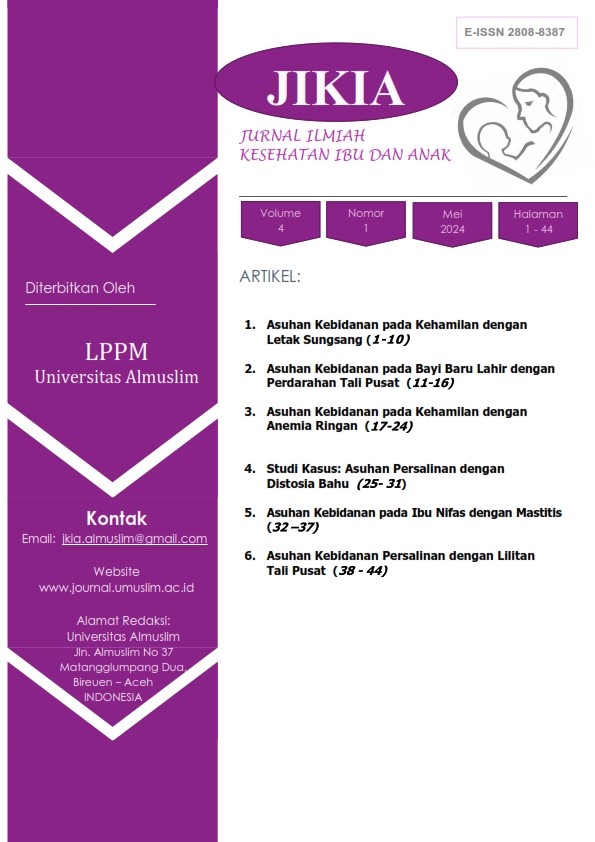STUDI KASUS: ASUHAN PERSALINAN DENGAN DISTOSIA BAHU
Kata Kunci:
Care, Shoulder Dystocia, Midwifery, ChildbirthAbstrak
Midwifery care of childbirth is care that is carried out to assist labor until the baby and placenta are born. Maternal and infant mortality rates in Indonesia are very high, therefore it is important for pregnant women to get health services according to the 10 T standard. The purpose of writing this article is to provide maternity care for mother S in the Independent Practice of Midwife Rosdiana Jeunieb District, Bireun Regency. The research method used is a case study using qualitative data conducted at PMB Rosdiana, Jeunieb District, Bireun Regency on October 02 to November 25, 2023. The subject in this case is Mrs. S aged 31 years G3P2A0. The results of the care given to mother S aged 31 years G3P2A0 obtained labor with shoulder dystocia, midwives provide labor care in accordance with the standards, so that the mother and baby's condition can return to normal. The conclusion of this study is that midwifery care for mother S at PMB Rosdiana has been carried out in accordance with the standards. However, several gaps were found in the delivery process, namely during labor the midwife pushed the mother's abdomen to speed up the delivery process, using non-sterile handscoons. It is expected to be able to better understand labor with Shoulder Dystocia so as to prevent complications in mothers and newborns.





